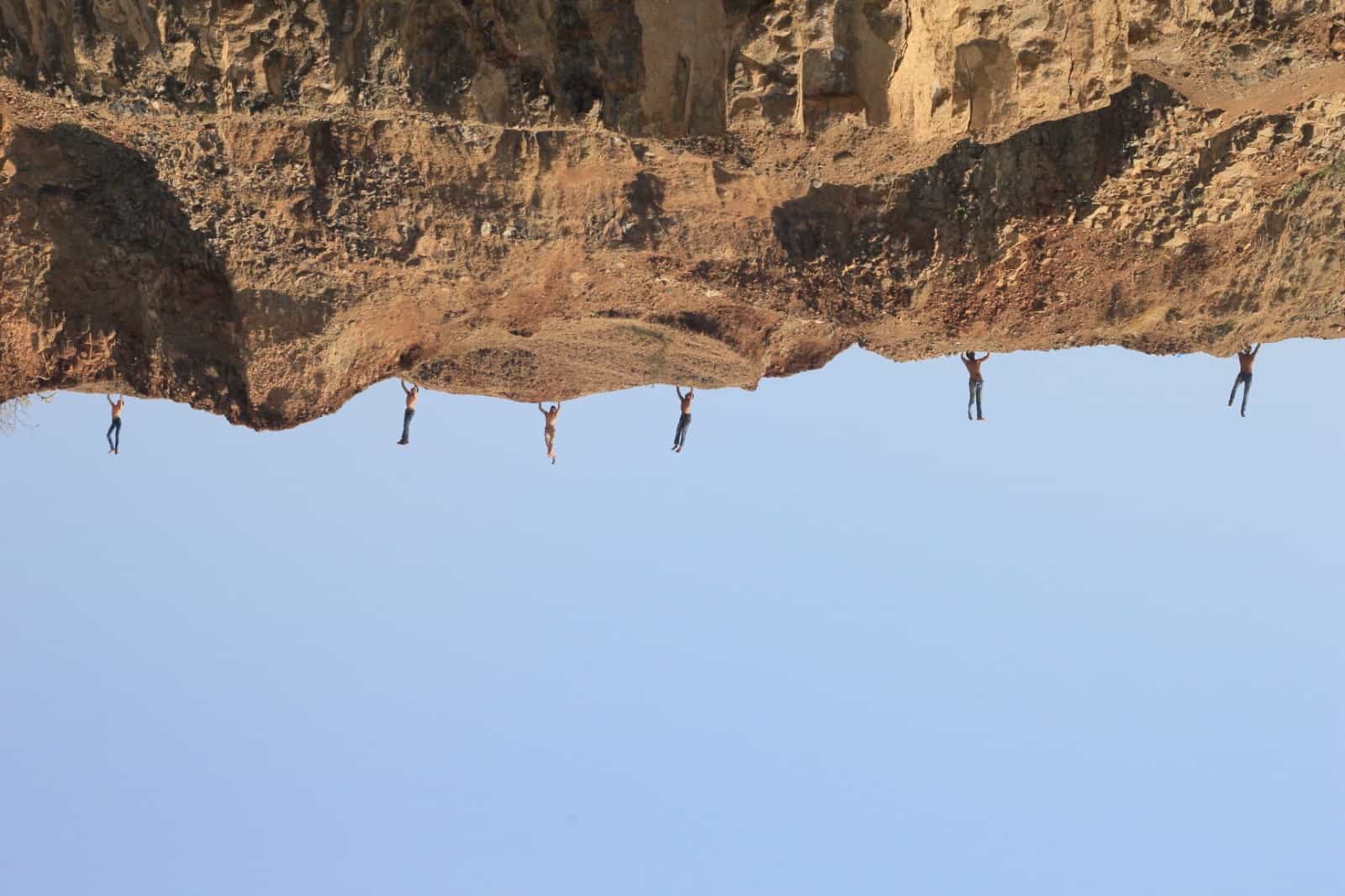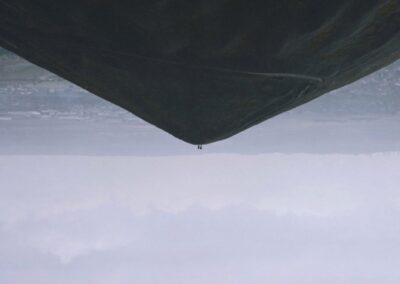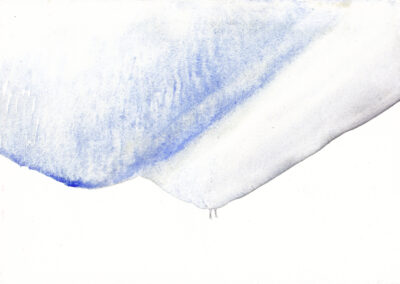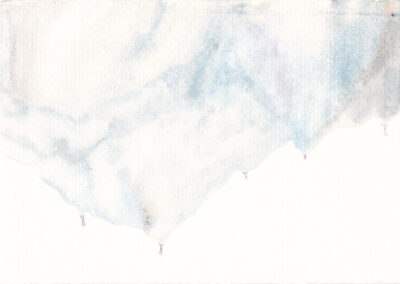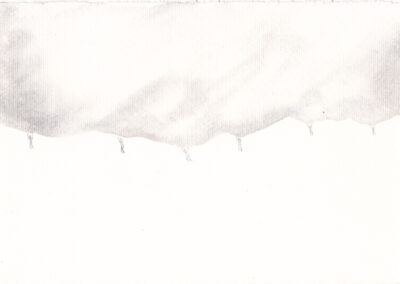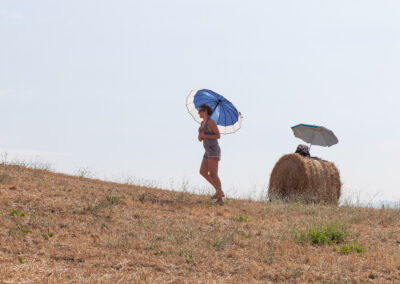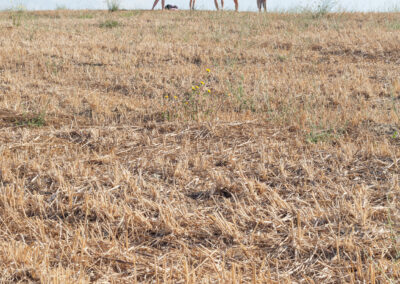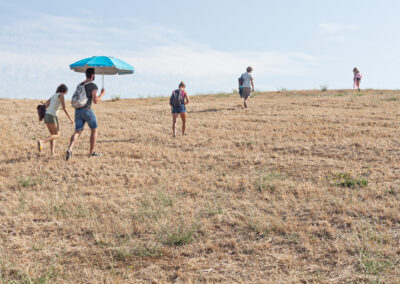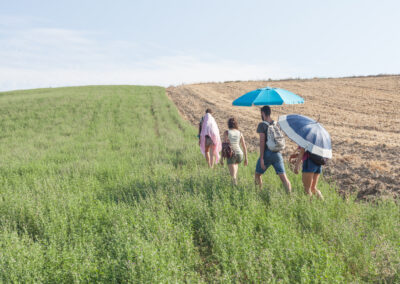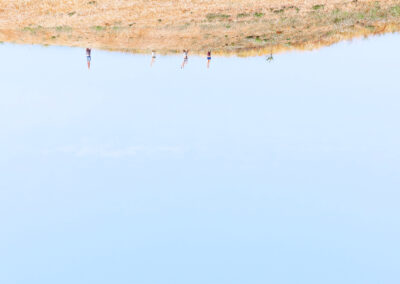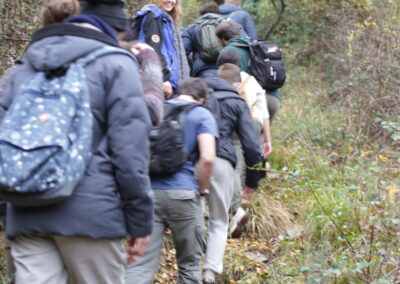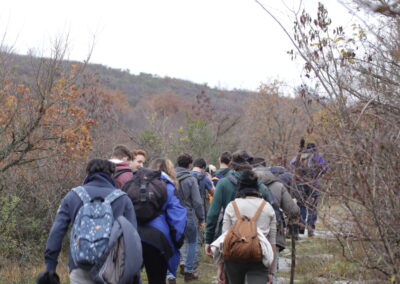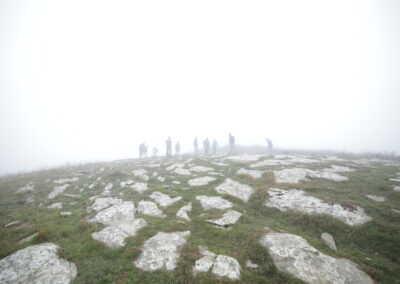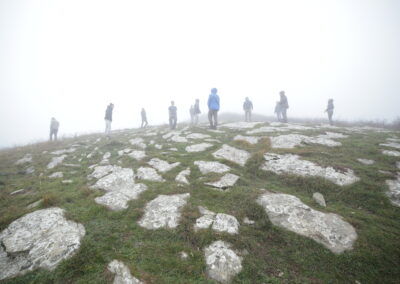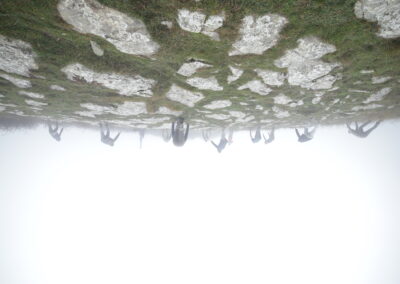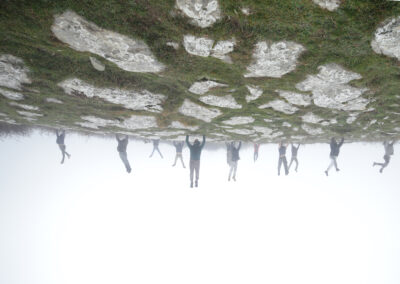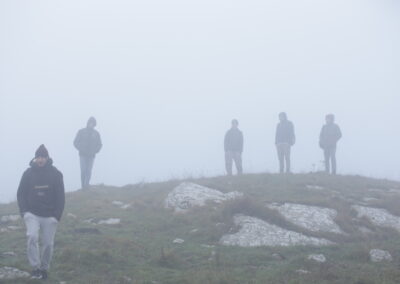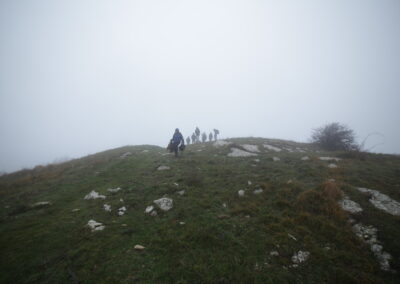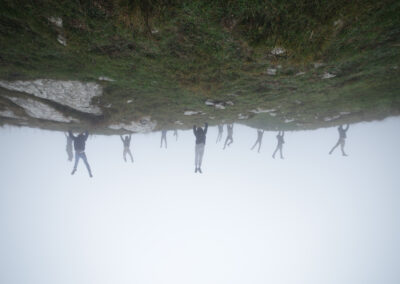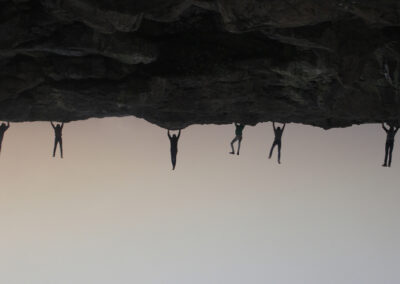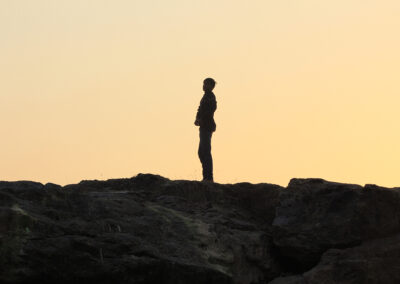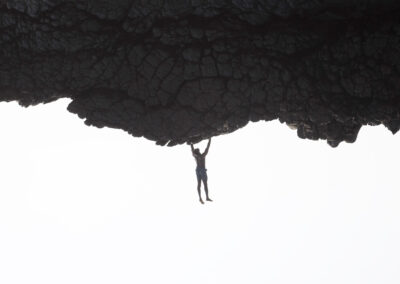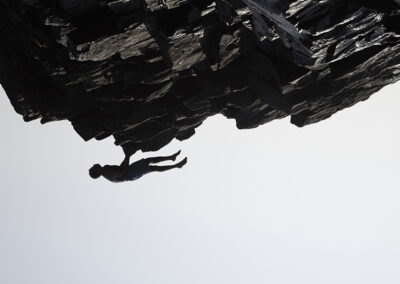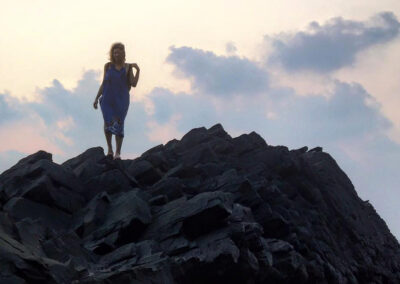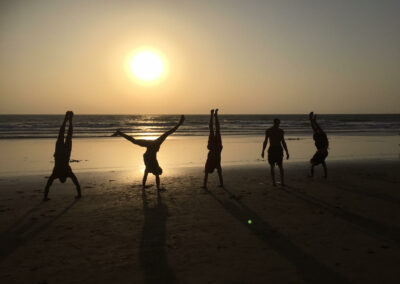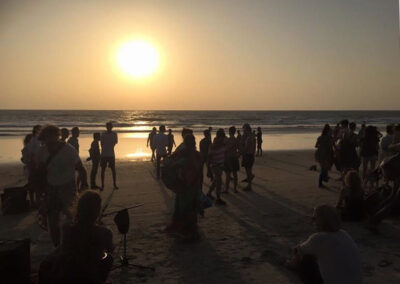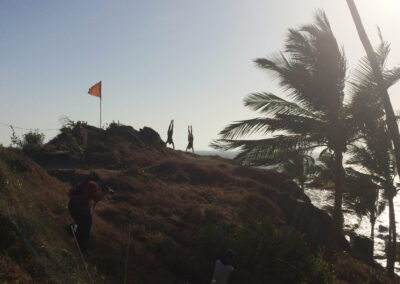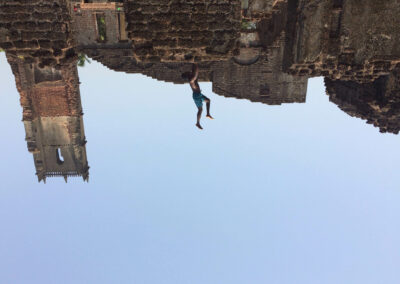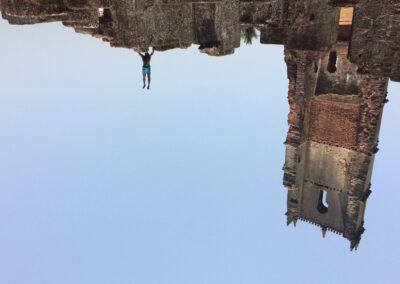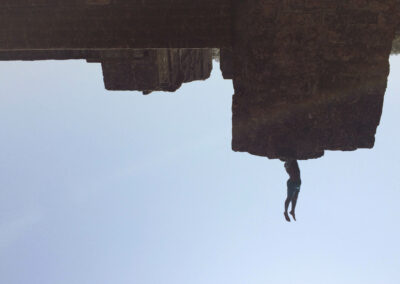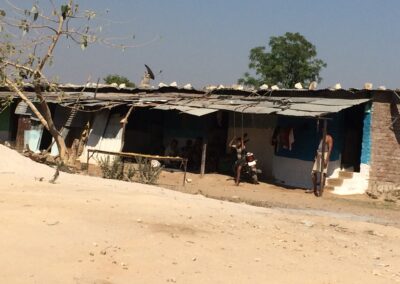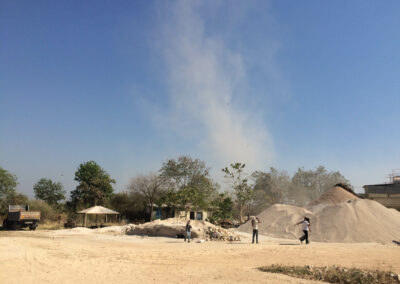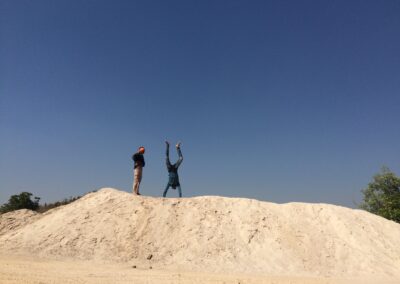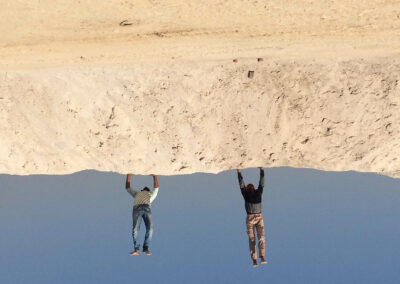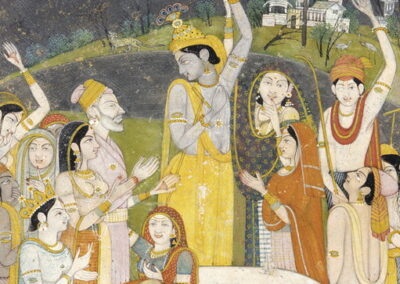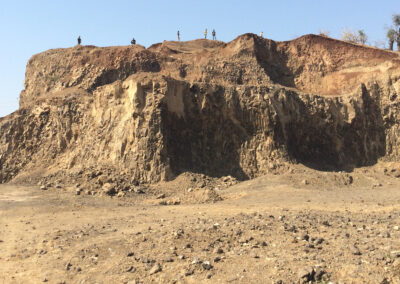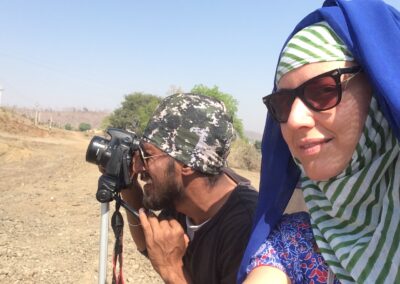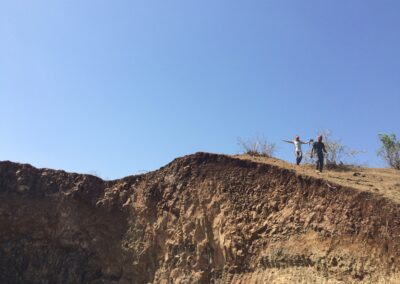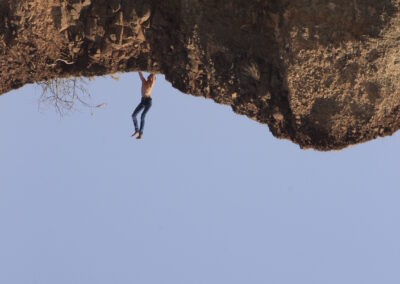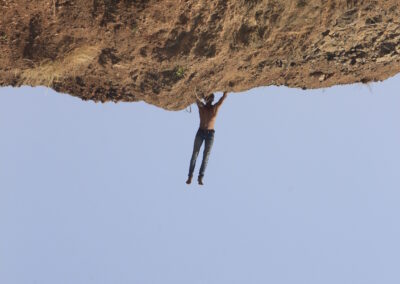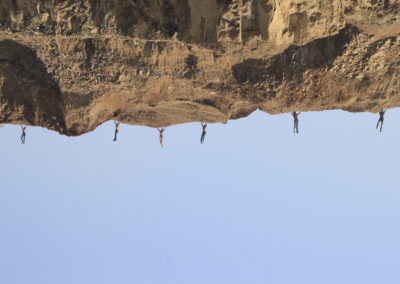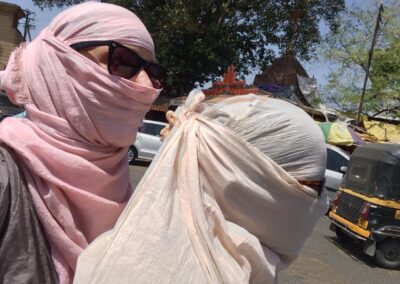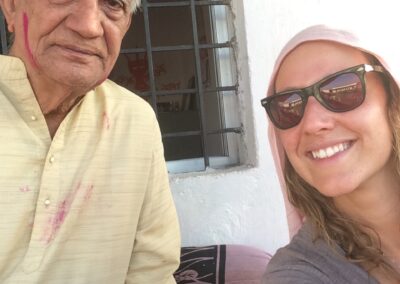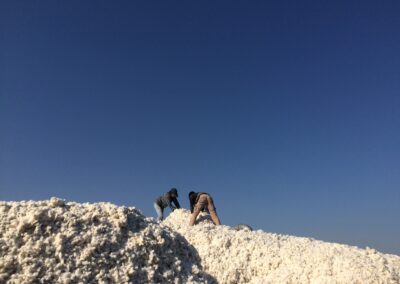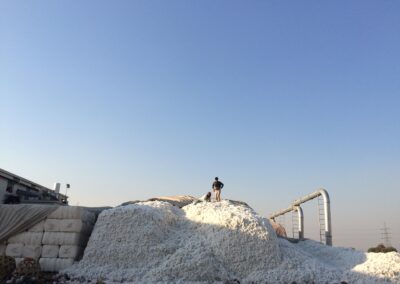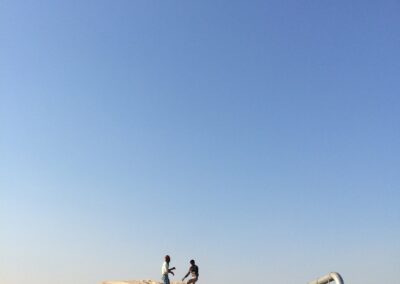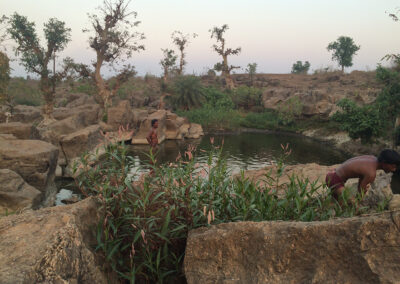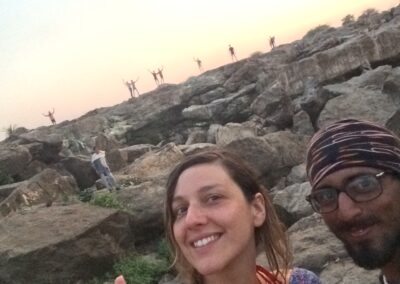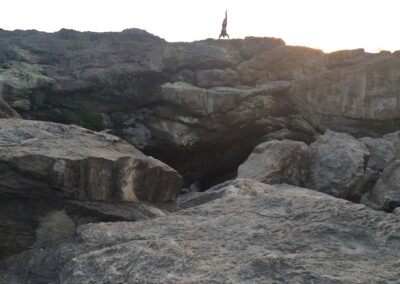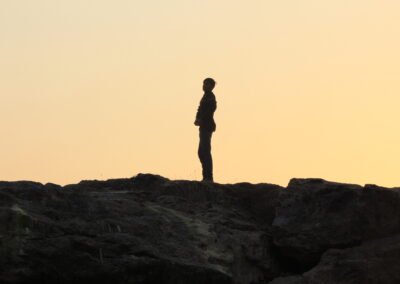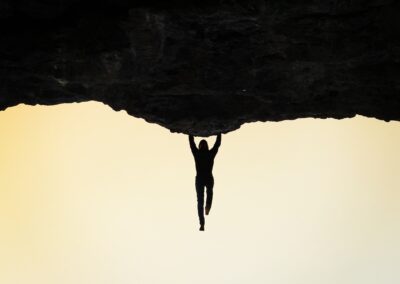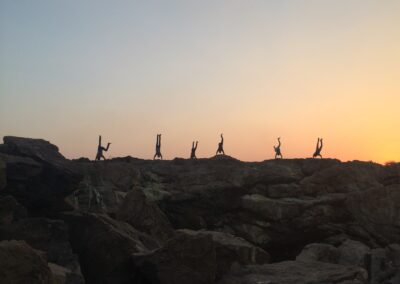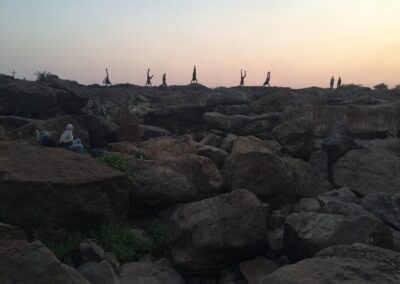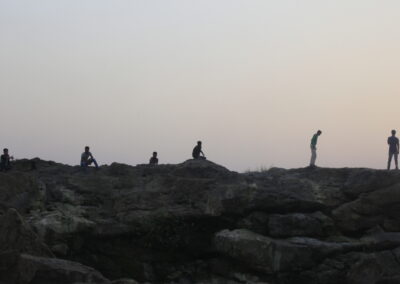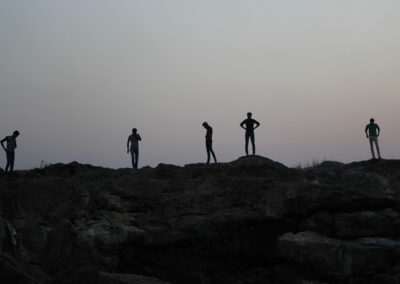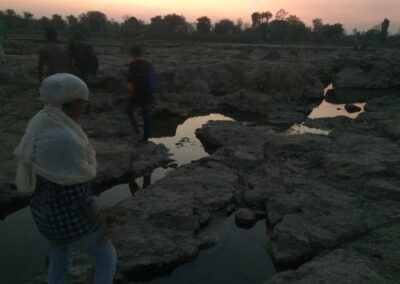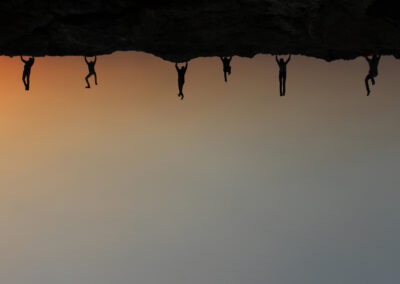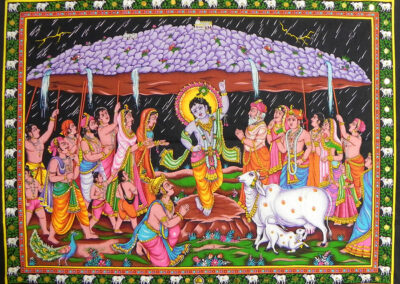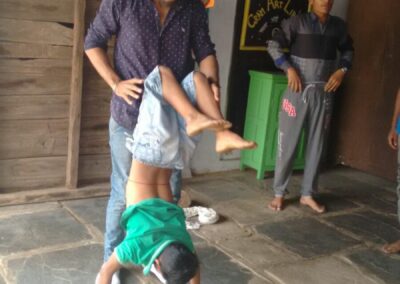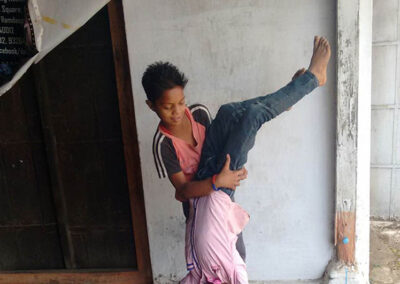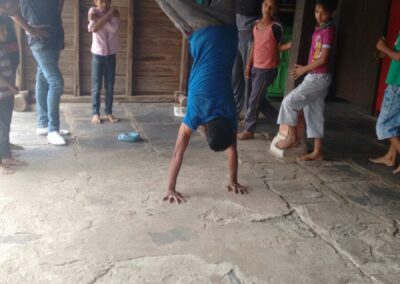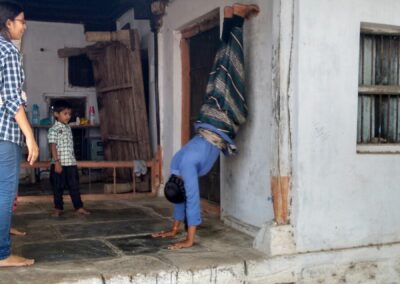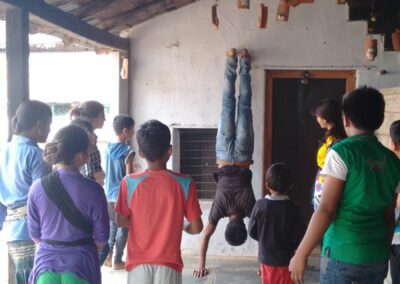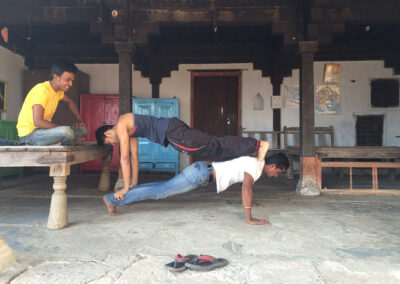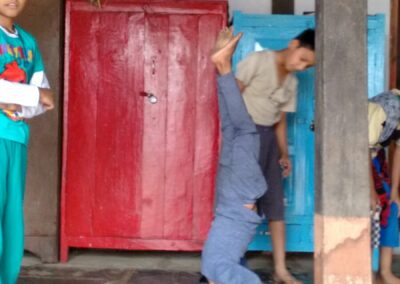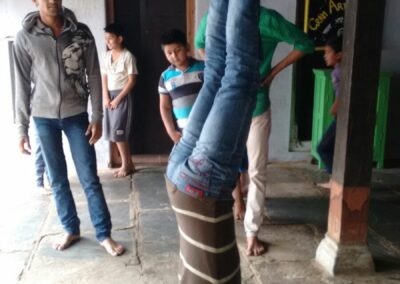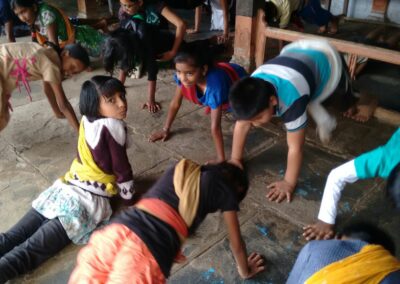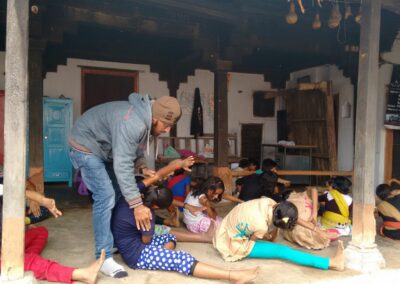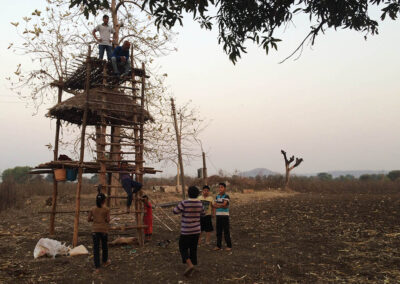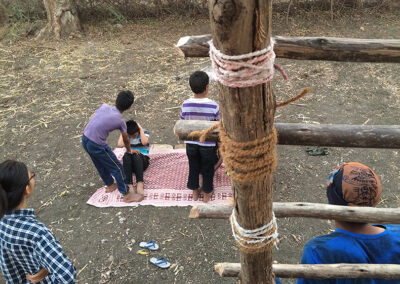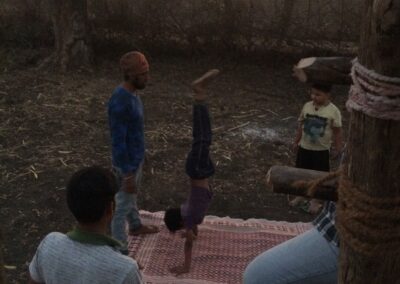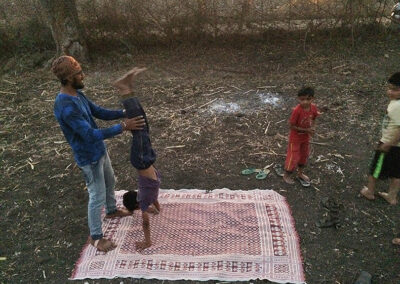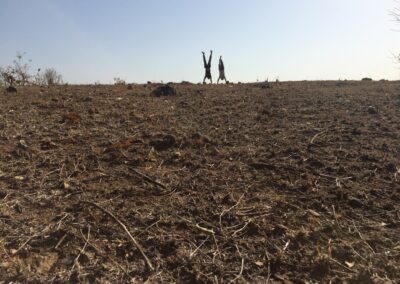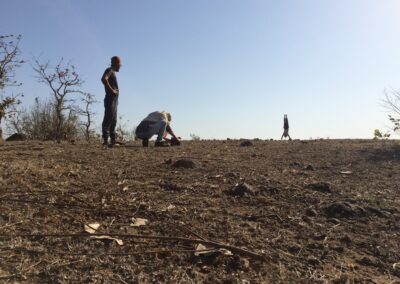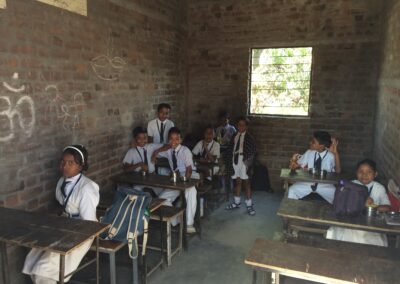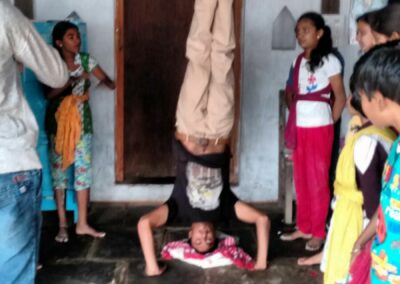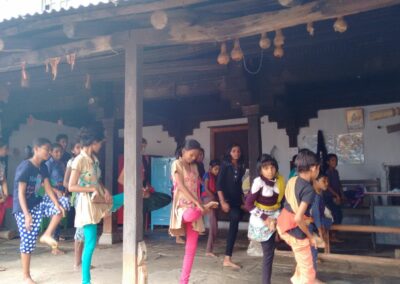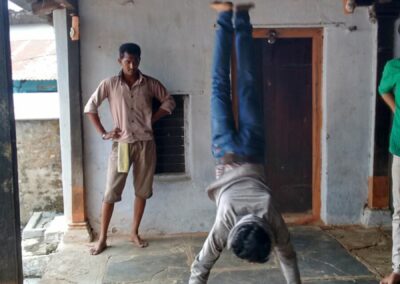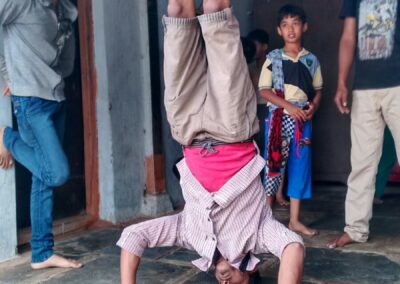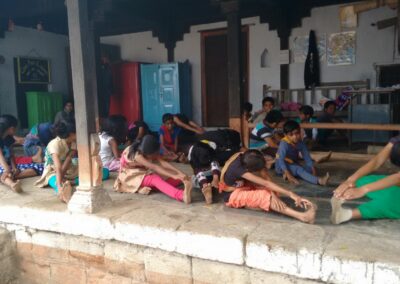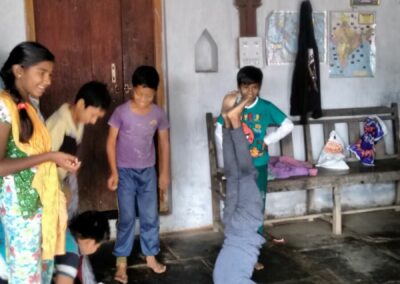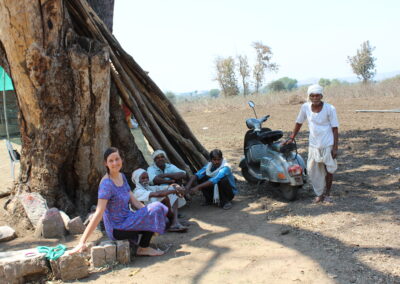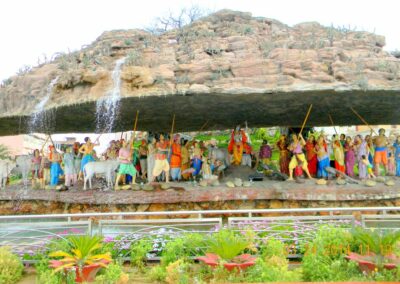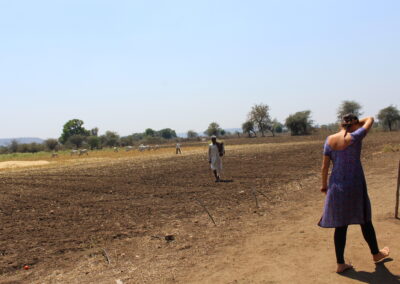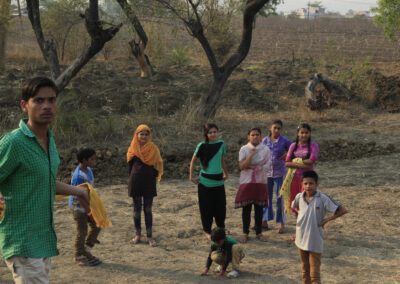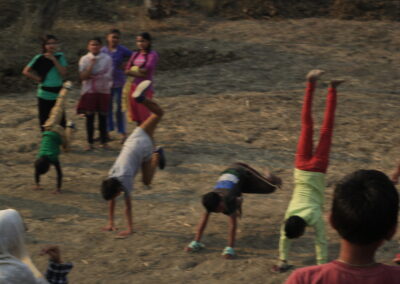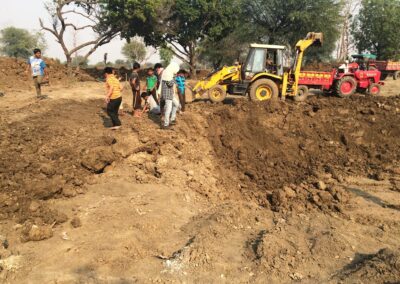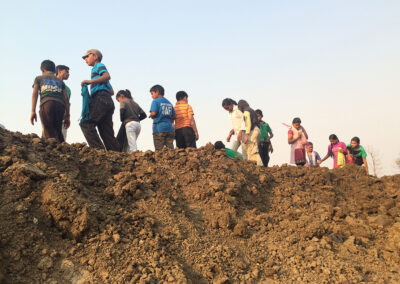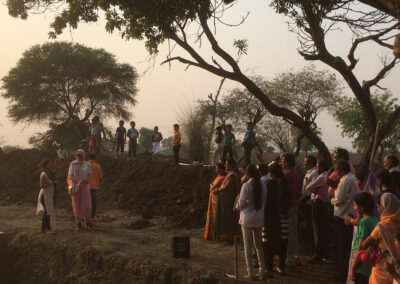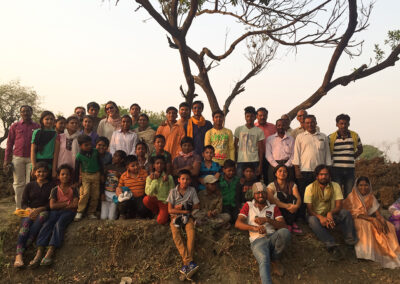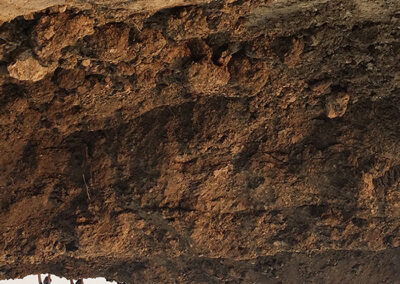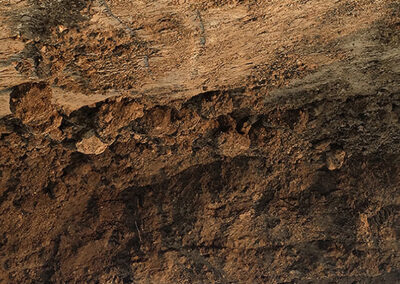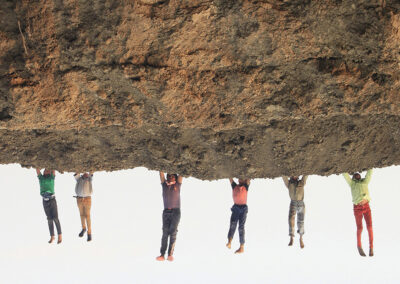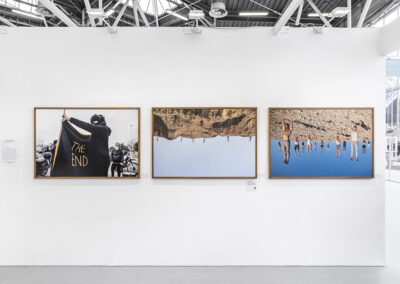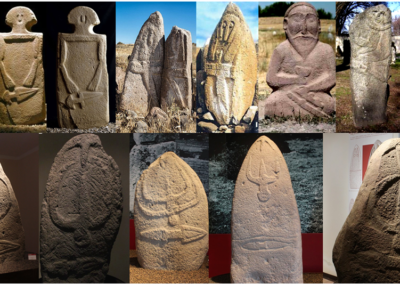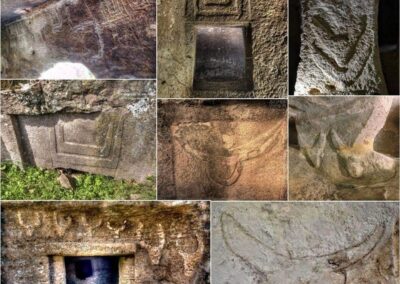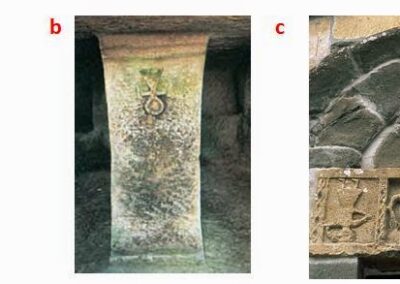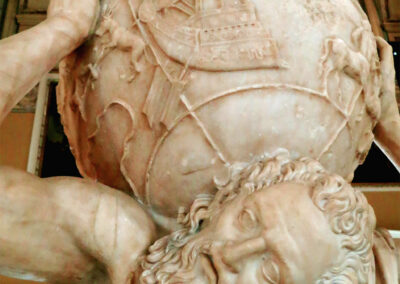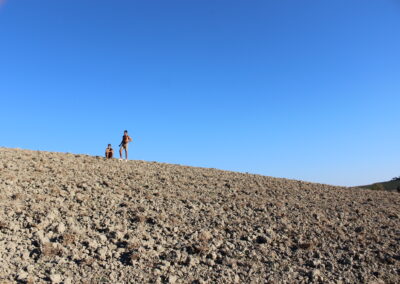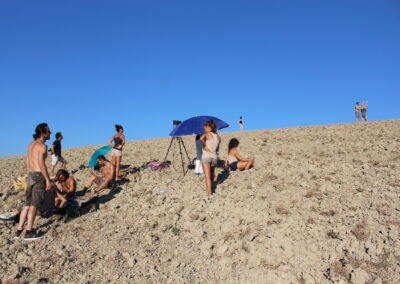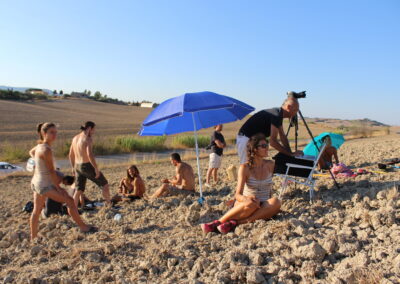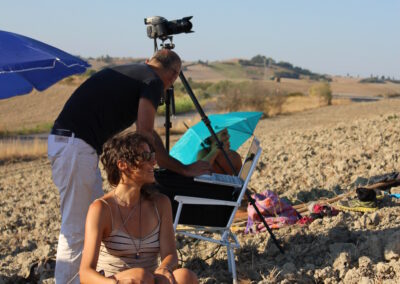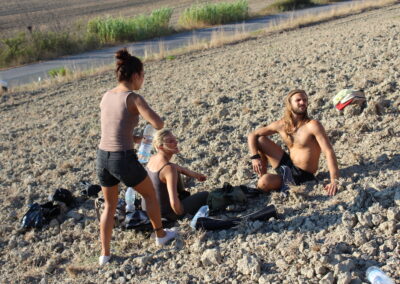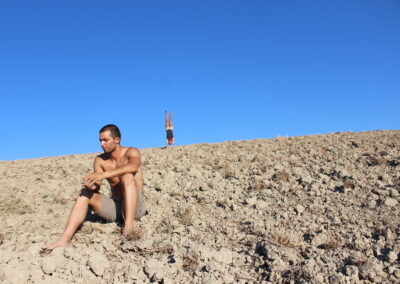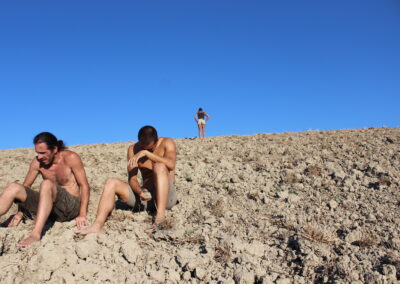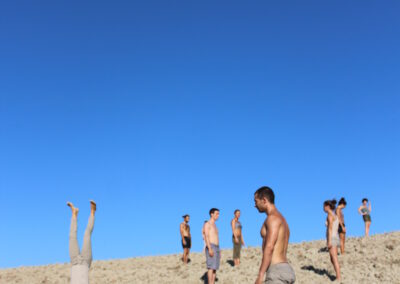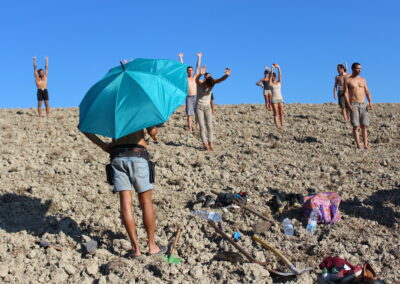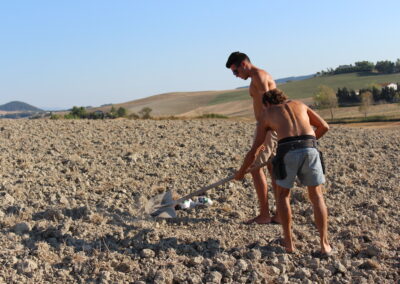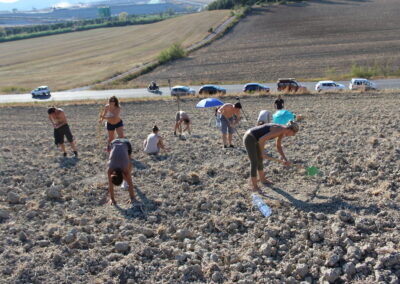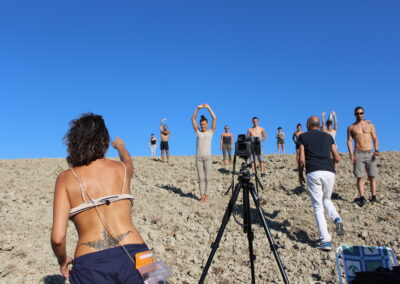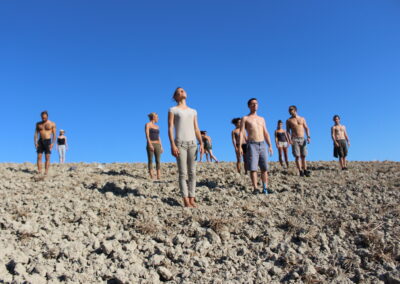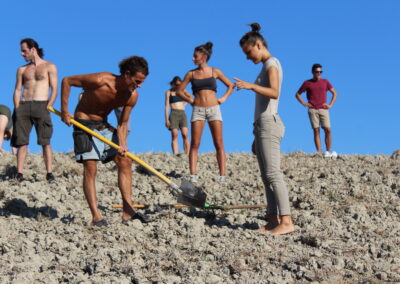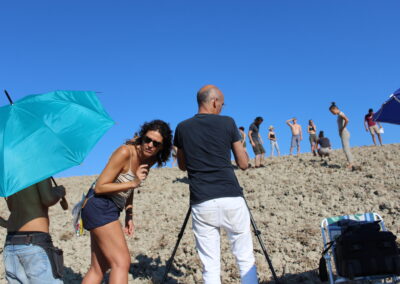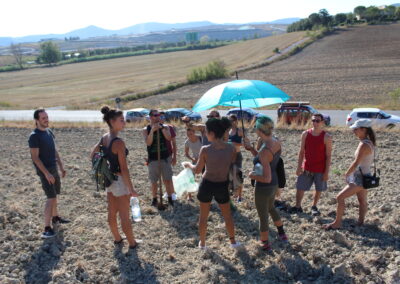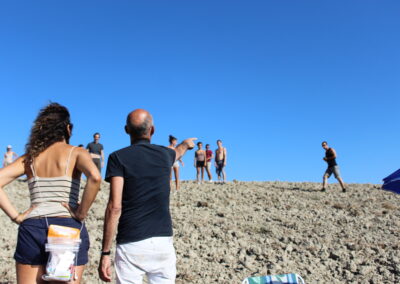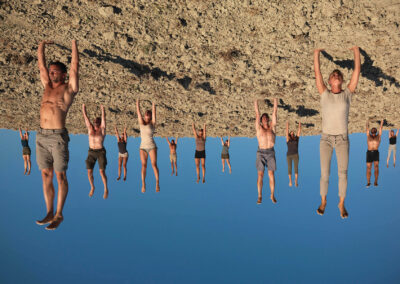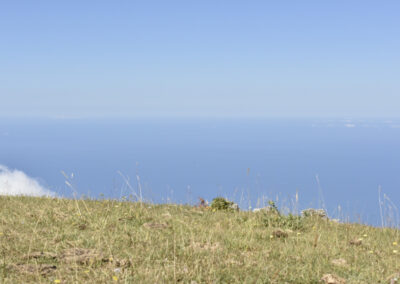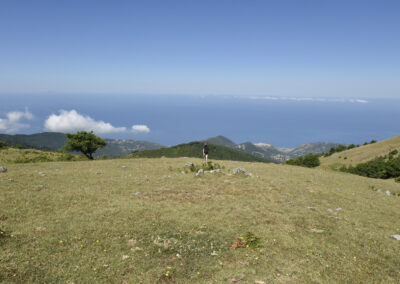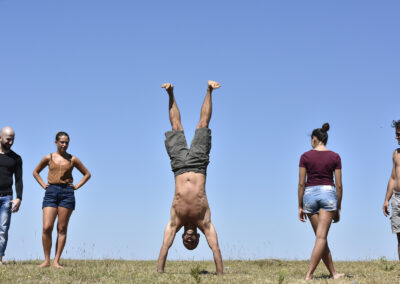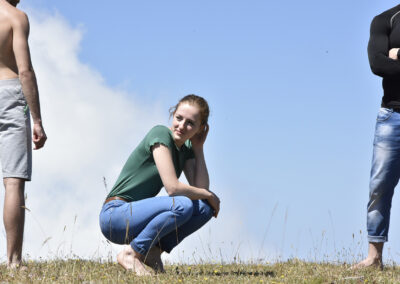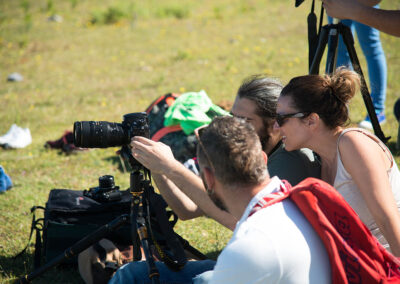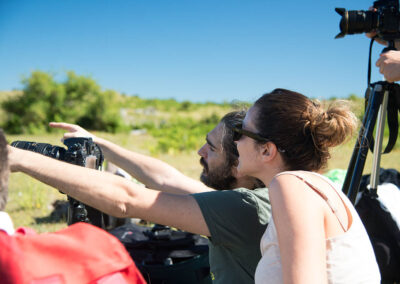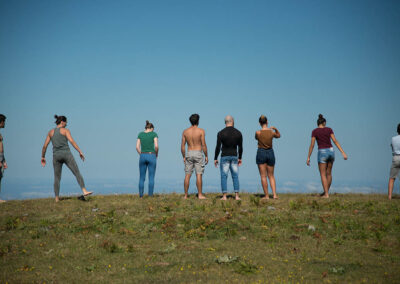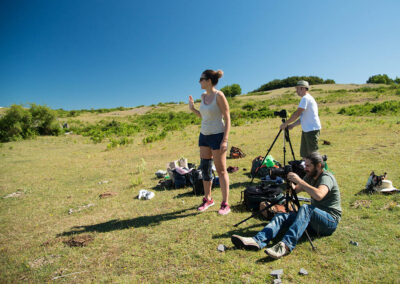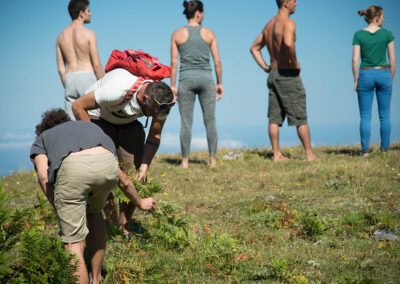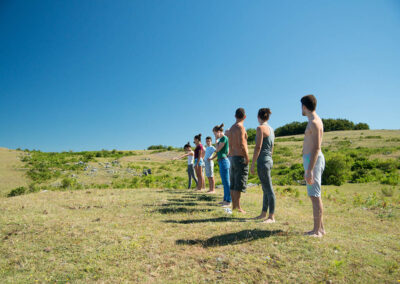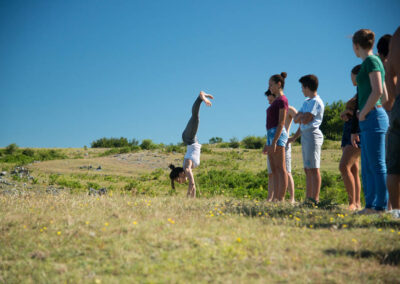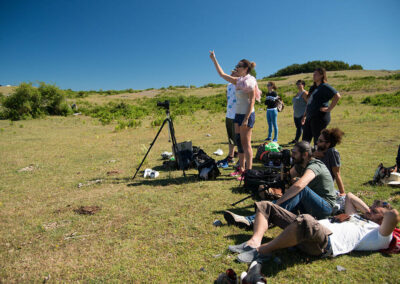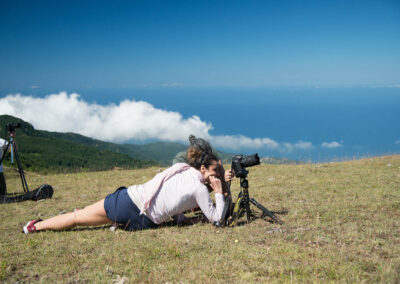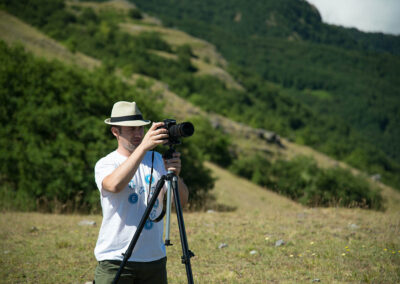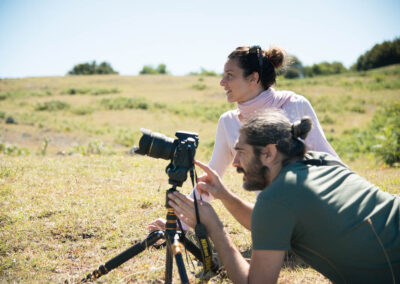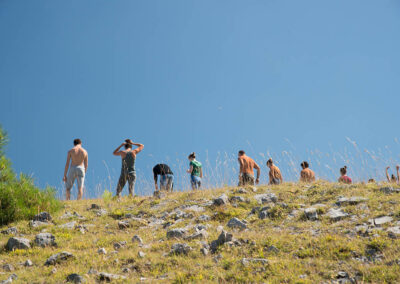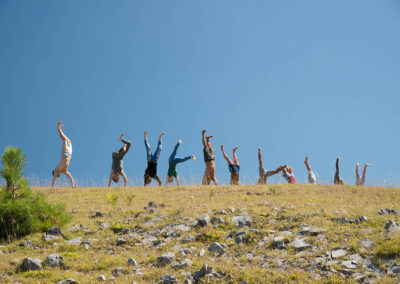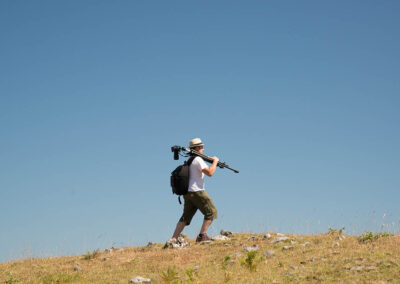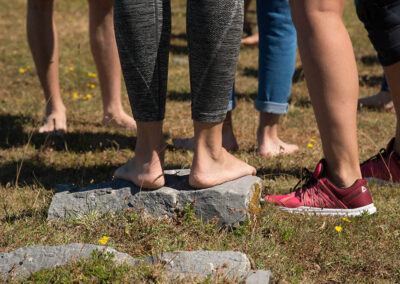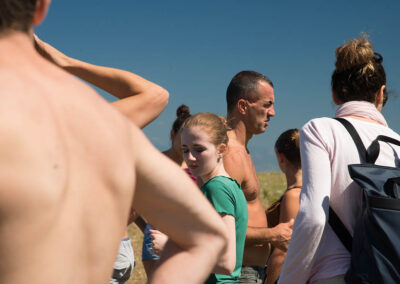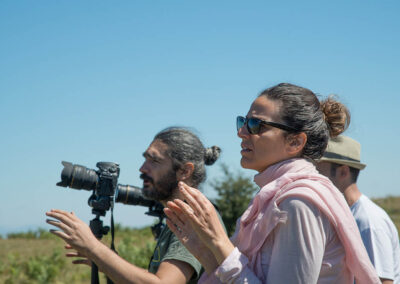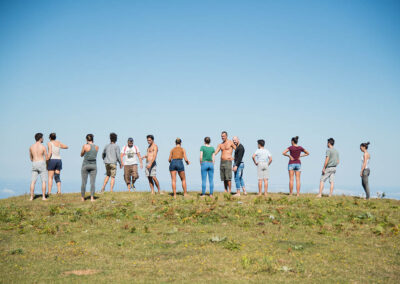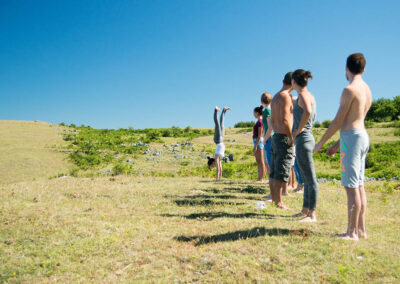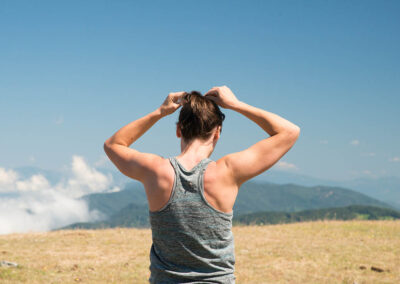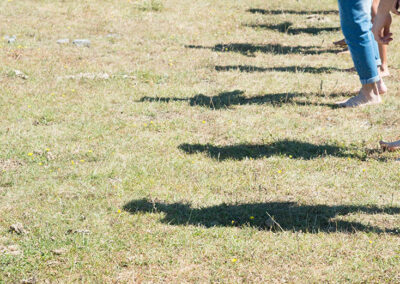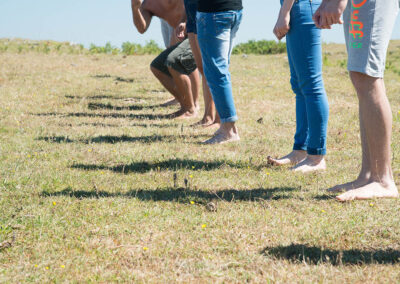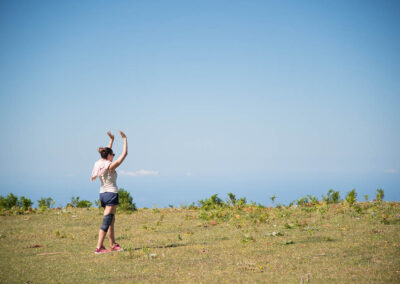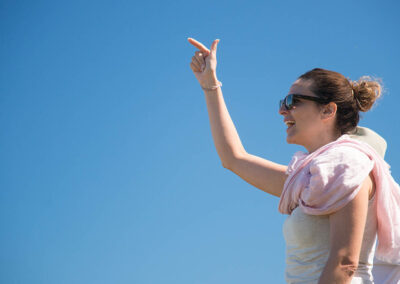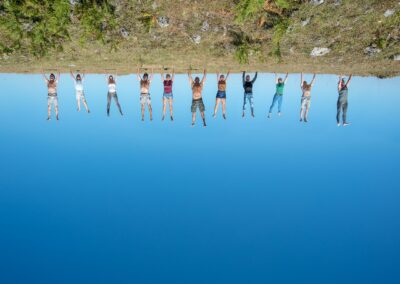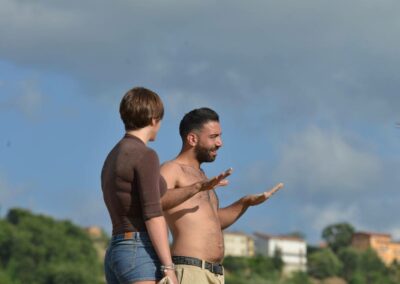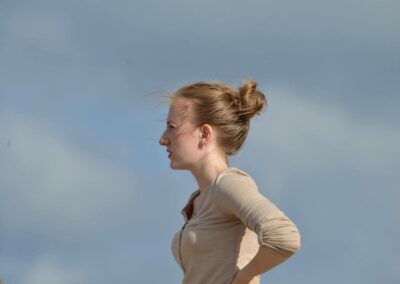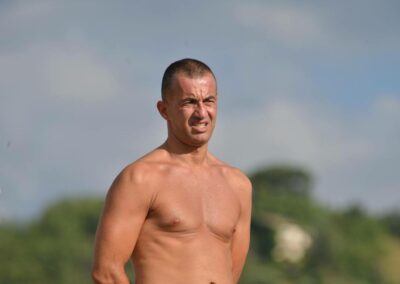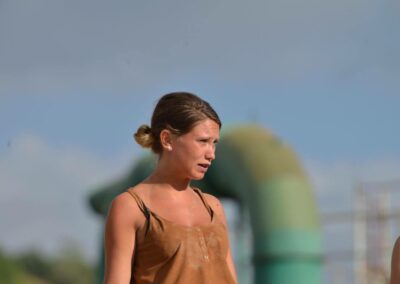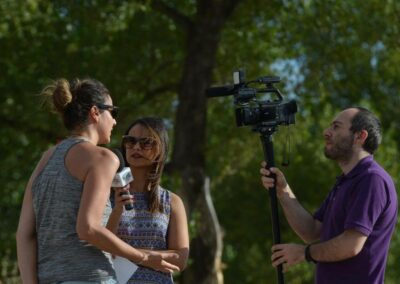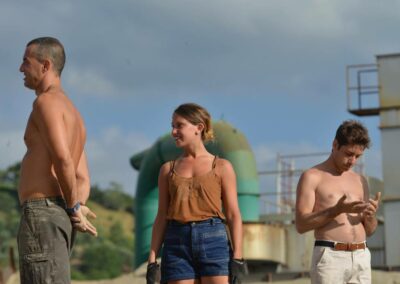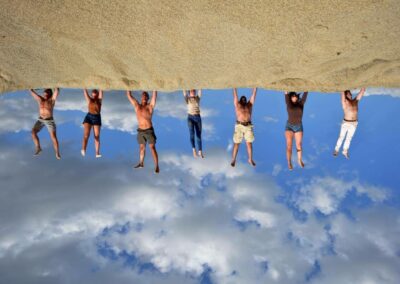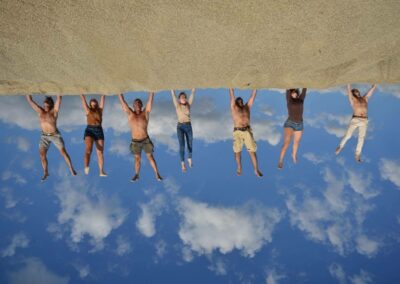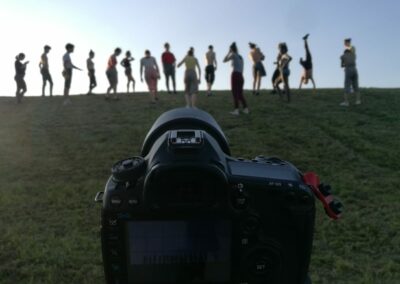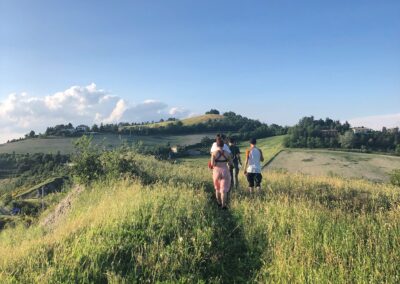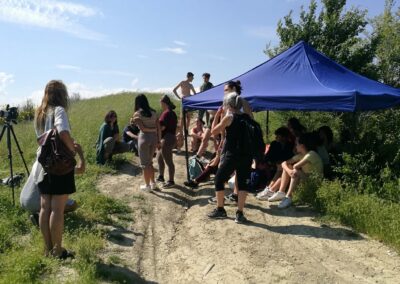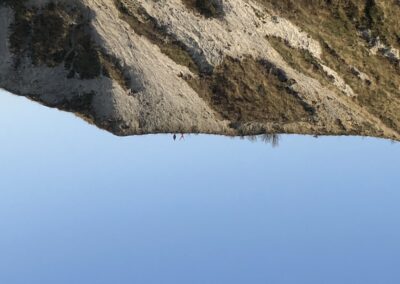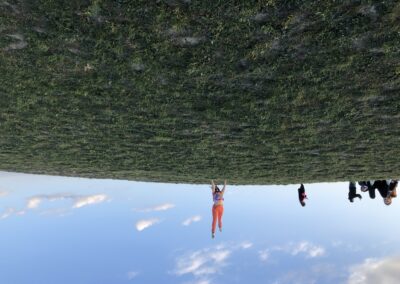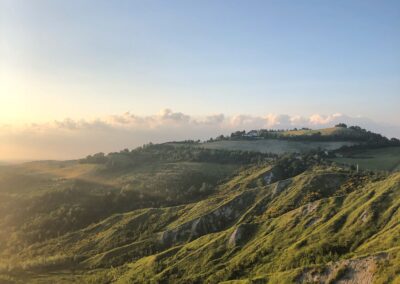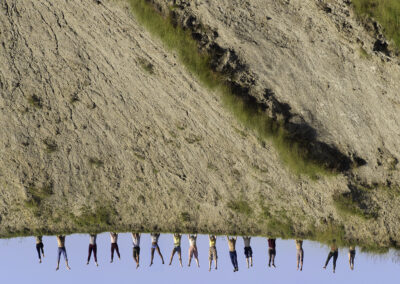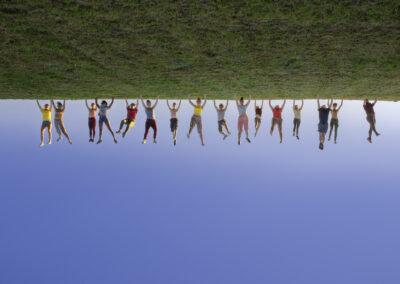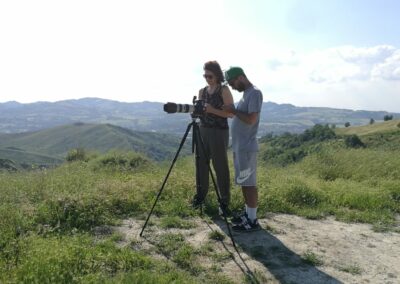THE PILLARS OF THE EARTH
work in progress in a process of organic development of meetings and coincidences that bring it in all the world, 2015 – 2021
Description
The work explores the concepts of rebirth, revolution and resurrection through a movement of verticality that overcomes the force of gravity, defying death in a metaphorical sense, reversing the natural posture with an act of will. People are holding up the world, instead of being held, pointing out the crucial nuance between assuming an active role in place of a passive role in society.
It can be a form of political action with the aim to overturn the present and to design new ways of living.
This project is created around an image I got from the collective unconscious. In a second moment I drew it down in my studio to share and recreate the same image with other people in different contests like the public space or in the middle of nature: on top of a mountain, a hill or a promontory.
Once there, the people involved had to assume the vertical position of athletes or the Kapalasana position of yoga, supporting their body with their hands.
Turning upside down the image or changing our “point of view” it looks like they are holding up the earth.
I cooperate with local people in order to create a series of workshops and participatory performances that would encourage the exploration of individual and collective potentialities and with professionals from different fields like sport trainers, yoga masters or teachers to improve people’s athletic skills and use of their bodies, aiming at reversing their point of view, sharing this experience with different people (art historians, philosophers, ordinary people, scientists etc).
We create a new wandering community in search of new ethics or spiritualities.
During the act of walk (to reach tops from which you may “see” better) we talk, exchange ideas and create spontaneously a new community of people.
The picture that emerges will be formed by one or more people holding up the mountain, as if they were the pillars of the earth or hung people, everyone their own way. The aim of the project is to generate at the same time a surreal and visionary, poetic and utopian image using the performance so to convey energy and structure in a powerful dialogue between the Nature and the human struggle.
Development
The project started in India, a strongly spiritual nation at the same time characterized by a fast capitalist development. Every action gets a different meaning determined by performers and places. Furthermore my final intention is to create a poetic action that goes beyond the sense of renunciation and acceptance of the mechanisms that characterize the exploitation in a specific area. The action creates both visual and conceptual vertigo because besides asking the question, it invites us to imagine how the revolution of a single individual, together with others, could contribute to the transformation of the entire planet.
Some of the photos and videos of this project were presented in different panel discussions, exhibitions in private and public institutions ,and, at the same time, became shared codes for each community. Watching the video we can understand better not only individual efforts and differences, but also the development of the action: all the performers start together, then each performer remains in position according to their own individual resistance.
Afterwords they collapse following different times, leaving a vacuum, a state of latency. They return in the upright position until the forces allow them to get up or remain in a horizontal position.
However it is not fundamental to participate in the whole process, because the final performance and the image by themselves ask questions with their iconography.
In the pictures of the series The Pillars of the Earth everyone, as a modern Atlas, sustains the world through an act of will, together with others, taking an active role within the society he belongs to.
Moreover the “upside down” has also a symbolic component because it is a symbol that is found in many parietal representations, especially in Neolithic ones, and there is a general opinion that it aims at portraying the moment of the passing, when the soul of the deceased, left the world of the living, rejoins the mother earth. If we want to understand life we should always keep in mind its impermanence given by death. Among the motivations behind the processes of the genesis of this project there is also the desire to understand the functioning of life and the relationships that support it, starting from an idea of non-duality between the phenomena and the force that sustains them. Through this work, I try to combine the various dualities like the existent life and death and to enter the realm of the unconscious.
I try to cancel any constraint linked to the categories: material and immaterial forms merge when the performative act becomes an object and the viewer becomes an artist through a collective way of development.
Every action seeks to bring out a renewed sense of the action and an affective knowledge. Moreover the performance The Pillars of the Earth wants somehow to activate an invisible primordial energy to recover the essence of the community and the essentiality of the human. It is constructed as a ritual, a sort of curative psychomagic act, to rediscover a new social conscience.
On the other hand, the people who put themselves in the vertical position together, bringing the weight of the body on their hands and raising their legs towards the sky, subvert the force of gravity and overcome the laws of natural causality. In this gesture I see a great symbolic power, an act of defiance of death understood also in a metaphorical sense.
This performance wants to keep itself open and potentially contains multiple meanings even opposite and takes on a different meaning respect to the place and the community involved, sometimes the sense of revolution prevails, other times of rebirth or resistance.
In the case of Bologna, the performance done on the Sabbiuno gullies, where the partisans were slaughtered, assumed a sense of resistance to the dominant closing attitude: resistance of the partisan ideals of respect for the dignity of life and of fundamental human rights.
The work also wants to cause a certain vertigo, the term vertigo, from vertere, means “to turn”. The vertigo that is determined by the change of one’s point of view is in itself a therapeutic moment. Disorientation is provoked every time that one relates to the unknown and my creative process is an act of transformation that begins with going towards the Other from Oneself, understood as the unknown, experiencing loss, separation and disharmony, trying to arrive at a synthesis in which the Other is accepted as an essential part of the Self. In The Pillars of the Earth there is a recognition of the community and of our co-dependence with the social and natural environment. In my work this acceptance is never formalized in a stable way, but only as a tension towards the utopia of creating a more harmonious system.
Vertigo is a feeling that moves this project: respect to the infinity of the universe and the constant possibility of relationship with it. The interest in the origin, and the consequent search for an ideal, and perhaps utopian, harmony led me to generate a particular imaginary on this attempt to go beyond the limit.
This action is a “therapeutic moment” because tends towards an original harmony, mentioned a lot in ancient sacred texts and taken up in contemporary psychoanalysis. Surely the vertigo caused by the overcoming of the limit is an engine of development. This process is also valid on an aesthetic level, as I believe that the formal aspect cannot be thought as separated from the processes underlying the genesis of a work.
Finally, this work is also an exercise in visual grammar because I try to teach people to look at the environment in a new way to see reasons previously hidden. The change of point of view is also a change in the forms and construction of the image.
The main intention is not to go in search of novelty, but rather to go in depth. This is possible only training to stay open and being at the service of art and people.
Method
My artistic practice owes its genesis to small illuminating visions that I then try to realize through sharing experiences. More than teaching to see the world in a new way, I believe that my work consists in directing people towards an imaginary that I have’t still understood either.
I start from images that I try to capture in what Jung calls the collective Unconscious or from what Rudolf Steiner defines the Spirit of Time.
Inspiration
For example, the image of a man who supports the earth with his hands is a very famous image among Hindus : Kishna who raises the Govardhan hill to protect the inhabitants from the rain god Indra wrath because inhabitants had stopped making offerings to the god to follow the rule of dharma, doing their duty instead of offering to god. These metaphorical images, of which religions are rich, have a great visual power, contain ancient truths, always current and have common remote roots which the artists cyclically draw with a renewed sense.
Perhaps the idea of the inversion of the viewer’s gaze arises with the artist Piero Manzoni who in “Socle du monde” (1961) placed the world itself on the pedestal and allowed that everything contained in it could become a work of art. In addition to the aestheticization of space, The gaze of Piero Manzoni and the request of volunteer participation like Spencer Tunik, may be one of several unconscious or conscious starting points, but before that there is the point of view of “the Wanderer on the sea of fog” by Friedrich, in which the feeling of the sublime lets perceive ourself as a small part of the whole.
I also include a strong social and political component creating seemingly impossible actions. They try to force the limits imposed by the reality like the “bridge” of Fracys Alys.
Through my works I also search a strong spiritual energy looking at Gina Pane’s works like “Ideal Situation: Earth-Artist-Skye”, trying at the same time to combine the experiences of Christian mystics with Eastern philosophy too, that re-humanizes the divine in a more both conceptual and spiritual ways.
“How can we become” human “in the world not separated, but in harmony with the non-human?” The answer lies in the attempt to overcome every dualism in order to experiment this fundamental principle of interconnection and co-dependence. The title The Pillars of the Earth takes up the image of the Bodhisatvas emerging from the earth, cited in the Lotus Sutra and in other Buddhist texts.
The humanistic vision is added to it from Florence, my hometown. The image of the pillar of classical architecture serves both as a harmonious compositional rhythm, and as a conceptual starting point to recall the possibility of the human being to be the creator of his own destiny.
The final images would like to give a new view on the possibility of people’s emancipation inspired by Joseph Beuys work: “We are the revolution, I propose a human revolution” and by the philosopher Daisaku Ikeda with this phrase“Lasting peace and the wellbeing of human beings does not depend only on the reform of society but also on the transformation of every individual’s life which can contribute to change both the destiny of a nation and the fate of humanity”.
